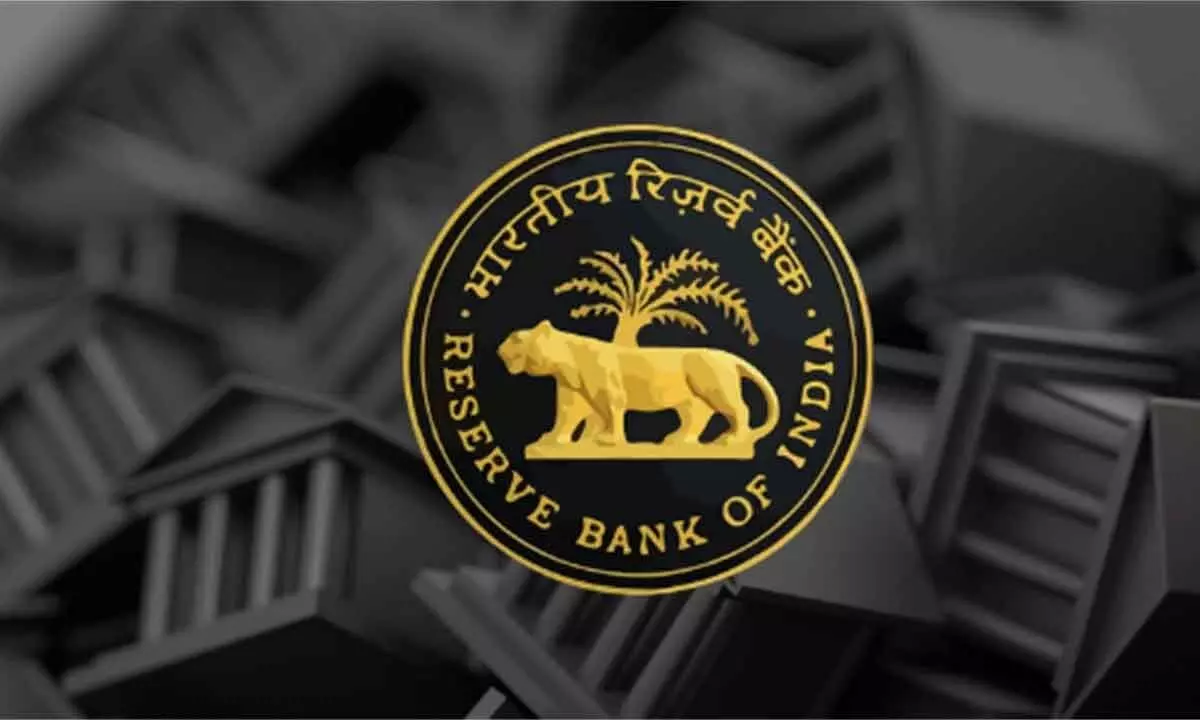Live
- Strict measures in Place for AP SSC examinations
- Kancha Gachibowli land: Activists launch campaign to preserve urban lung space
- GHMC proposes euthanasia for aggressive strays
- Over 6 lakh Olive Ridleys turn up at Gahirmatha
- Two women journos held for ‘defaming’ CM
- 25 lakh ‘Lakhpati Didis’ in next 5 years: Patra
- Villagers come together against illegal mining
- NALCO holds Customers’ Meet
- Notorious criminal injured in encounter
- Food safety officials inspect mangoes at Mozamjahi mkt
Timely caution to go slow on unsecured credit


Right from Reserve Bank of India to the Union Finance Ministry, alerts are being sounded following emergence of incipient signs of stress in the...
Right from Reserve Bank of India to the Union Finance Ministry, alerts are being sounded following emergence of incipient signs of stress in the unsecured consumer loans segment. Bank credit outstanding to the personal loans segment was Rs 48,26,833 crore as of September 2023, up nearly 30 per cent over the corresponding month in 2022. Unsecured segment comprises microfinance, credit cards, personal loans and retail loans.
While RBI Governor Shaktikanta Das asked banks and NBFCs (non-banking financial companies) to strengthen their internal surveillance mechanisms, address the build-up of risks, if any, and institute suitable safeguards in their own interest, Finance Minister Nirmala Sitharaman said, a day later, on Thursday that the financial institutions need to rein in their exuberance, “not to go too far.” They jumped in to render timely advice.
It was only on November 16 that risk weights were raised by the RBI in respect of consumer credit exposure (outstanding as well as new), including personal loans, but excluding housing loans, education loans, vehicle loans and loans secured by gold and gold jewellery, by 25 percentage points to 125 per cent. The higher risk weighting by up to 25 percentage points hugely raises the capital costs for the banks and the NBFCs. Bank lending to the latter too gets affected, now. NBFCs’ loan book also consists of MSME loans, vehicle loans and other categories of loans which may suffer reduced flow of credit following new norms. The lenders will likely consider raising interest rates in certain segments of retail credit.
The surge in unsecured loans is, however, seen continuing even after the tightening of norms. Though all parameters, including gross non-performing assets of banks and NBFCs, do not appear alarming, the caution will, nevertheless, alert lenders to stave off unforeseen challenges. Easy access to unsecured lending leads to unbridled consumerism. Remember the micro credit crisis in 2010 in India, especially Andhra Pradesh, when people took credit from more than one source and could not pay back. Pressures from lenders led to even suicides among small borrowers. The then AP government’s crackdown dealt a severe setback to the micro credit institution itself.
The smaller the unsecured loans, the higher the risk they entail. Defaults also impair loanees’ ability to find low-interest loans in future. Increasing incidence of delinquencies, when loans are used for instant gratification rather than economic interest, has made financial mandarins in the government take notice of the situation. The banks and the NBFCs are asked to bolster their internal surveillance systems, keep tabs on the trends, and avert any downside risks. As per the Financial Stability Report in June, there was a steady rise in unsecured retail credit, faster than corporate borrowings, in the last three years. While overall credit growth was about 12-14 per cent, unsecured retail credit was surging at 23 per cent in the last two years. Total personal loans or “other personal loans” were estimated at Rs 12.2 lakh crore as of August, up 26% from a year ago.
Risk signs began to show up in the small ticket unsecured segment about five months ago, say analysts and, hence, the caution not to let it go too far. It is the growth in total volume that is concerning now. Sitharaman said they have noticed a clear uptick in the less than Rs 50,000 ticket size. It is expected that NBFCs and banks would respect the red line, a pre-emptive move, to avoid any financial instability in the country.

© 2025 Hyderabad Media House Limited/The Hans India. All rights reserved. Powered by hocalwire.com






